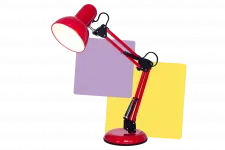A TA10 form is one of several forms a seller must complete during the conveyancing process. The TA10 sets out, in detail, what is or is not included in the sale of the property.
Given that many people are unaware of what constitutes a fixture (which is considered part of a property) and a fitting (which is basically a chattel and may not be part of the sale), detailing this information during the sale makes sense. In fact, it’s worth setting out some things even earlier, for example in the estate agent’s details.
It’s not unusual to specifically exclude fitted carpets and curtains, although in many cases this later becomes a negotiating point between the buyer and seller and can be a useful tool in the negotiating process. Other sellers might wish to especially exclude their dream garden shed* which might, otherwise, be deemed part of the sale.
The RICS offers a handy definition of the difference between a fixture and a fitting (or chattel).
A fixture is deemed to form part of the land or building. A chattel retains its independence and can be removed.
A chattel does not pass onto the purchaser when the land or building is sold.
They then set out two basic tests to distinguish a fixture from a chattel:
- Degree of annexation
This depends upon how firmly an object is fastened or fixed to a property. The greater the degree of annexation or physical connection the more likely an object is to be a fixture. - Removability
How easy is it to remove the object? The easier it is to remove the more likely it is to be a chattel.
As you can imagine, this can be a complicated subject and the definition can have a wider impact on things you may not consider, such as the amount of Stamp Duty Land Tax that is payable, capital allowances, etc.
Whilst not a definitive list, the courts, in the past, have set out some decisions worth knowing.
| FIXTURES | CHATTELS (FITTINGS) |
| Central heating | Pictures |
| Bath | Fridge |
| Toilet | Cooker |
| Dry Stonewall |
Garden shed |
An example of the TA10 Fixtures & Contents form can be viewed here.
Related articles:
- What is a TA6 Property Information Form?
- Documents Needed When Selling Your Property
- What are the costs of selling a house?
- What is the Land Registry and What does Registration Cost?
- Do I have to pay Capital Gains Tax when I sell my Home?
Recent posts
Best UK Mortgage Rates this Week
Yesterday

Here are the lowest fixed mortgage rates of the week, available to first-time buyers, home movers, buy-to-let, and those remortgaging.
Call us for more information: 01628 507477 or email: team@mortgagerequired.com.

Just because the Bank of England decides to reduce the base rate, this doesn't automatically mean that your mortgage rate will go down.
Autumn Budget 2025: A Summary
23 days ago

Chancellor, Rachel Reeves, has delivered the Autumn 2025 budget. We have summarised the government's plans for tax and spending.
Renters' Rights Act
14 Nov 2025

The Renter’s Rights Bill became law at the end of October, which means it has been signed off by the King, and it is now the Renters’ Rights Act. Despite this becoming law, these changes are likely to start changing within the next six months, with the aim of being fully implemented throughout 2026 and into 2027.

A welcome change in school is coming as financial literacy is due to become compulsory in schools in England.
The Government has announced that as part of the new national curriculum, children in primary and secondary education will be required to learn about budgeting, compound interest, managing money, and mortgages.
The top 10 most beautiful villages in the world
24 Oct 2025

Forbes has published a global ranking of stunning locations and one popular picturesque corner of the UK has nabbed top spot.

Over three years after the Mini-Budget took place, we look at what the mortgage market looks like now, showing the difference in mortgage repayments.

The government has announced plans to make buying or selling a home cheaper and quicker with what is being called the “biggest shake-up to the homebuying system in this country’s history.”


















